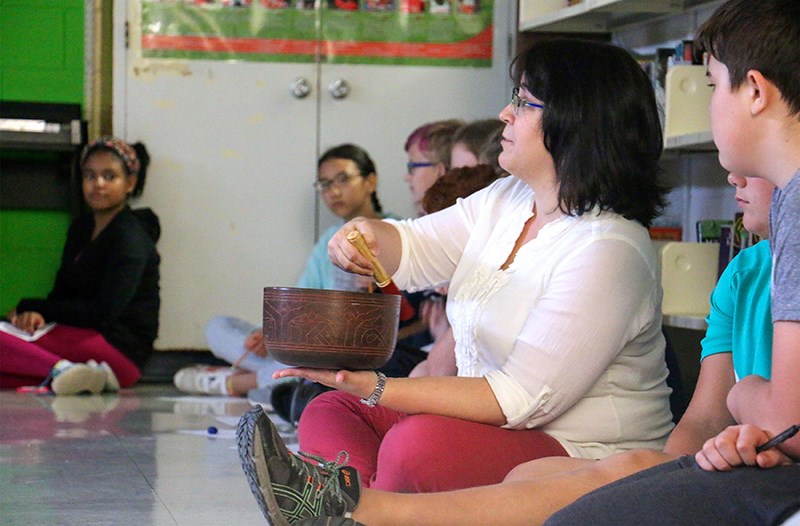Tara Jeffrey
When the senior students at Lakeroad School gather on Monday mornings in the Learning Commons, you can almost hear a pin drop.
The lights are dim, the air is still, and a 45-person circle has been formed on the floor, as they review the traditional rules of their restorative learning space: truth, respect, take turns, and listen.
“If you don’t speak your truth, we don‘t know it,” teacher Emily Fortney-Blunt reminds the group before asking everyone to close their eyes, reach into her bag, choose one rock, and describe it, without looking.
One by one, while passing the traditional talking piece, each student — along with fellow teacher Charity Murphy — describes his or her rock: smooth, cracked, pointed, etc. They’re then asked to open their eyes and describe the rocks again.
“Now, what if I said this really isn’t a rock — and we’re actually talking about people?” Fortney-Blunt asks. “Did you use any negative ways to describe it?”
“Think of the words we use to describe each other — people are more than ‘fat’ or ‘stupid,’” she continues. “Because sometimes, we might have our eyes open, but our hearts are a little closed off.”
The exercise is part of an ongoing theme of restorative learning that Fortney-Blunt has brought to her classroom, along with teachings about residential schools, truth and reconciliation.
“Restorative Circles really are a First Nations approach to dealing with everything, from justice to conflict resolution,” she says, noting the rise of hateful rhetoric and racism in today’s society compelled her to do something.
“We try to build intentional relationships with one another, and with people in the community as well, so that we are not looking at an ‘us vs. them’ approach.
“We try to understand circumstance, where people come from, why they have different views from us.”
Back in the circle, the students are asked to come up with their own Secret Kindness Agent Names on a special certificate.
“Choose a positive name that represents the light inside you,” she explains. “This will now be the name you go by when we meet.”
Riley Randall decides to go by “Agent Supercat” because, “I’m super at giving kindness, and I love cats.”
The project -- inspired by author and speaker Ferial Pearson, whose TEDx talk was shown to the class — sets out to prove that small acts of kindness can change the world.
“We brainstormed ideas about things you can do that are kind, that don’t cost anything, without expecting any praise or acknowledgement,” said Fortney-Blunt.
“They will each get an envelope explaining what their secret acts of kindness will be. Then, when we come together after they’ve had their week to accomplish it, they’ll have the opportunity to reflect on what they did.”
Fortney-Blunt ends the meeting with three taps on the ‘singing bowl,’ releasing a deep, soothing sound as the group quiets down, preparing for another day at the school on Lakeshore Road rejuvenated and refreshed.
“It’s a different way of engaging, and a different type of how we get along,” she says. “I may be the teacher in the room, but I am still a learner in the room.”
